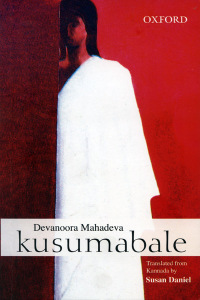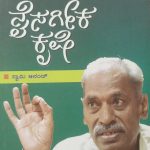Beyond ‘fidelity’ – BAGESHREE S.
[Review of English translation of Kusumbale by Bhageshri.S in The Hindu, 2. 8. 2015. ಕುಸುಮಬಾಲೆ ಇಂಗ್ಲಿಷ್ ಅನುವಾದ ಕುರಿತು 2. 8. 2015ರ ದಿ ಹಿಂದೂ ಪತ್ರಿಕೆಯಲ್ಲಿ ಭಾಗೇಶ್ರೀ.ಎಸ್ ಅವರು ಮಾಡಿದ ವಿಮರ್ಶೆ.]
THE HINDU

Kusumabale by Devanoora Mahadeva- Trs. Susan Daniel.
Susan Daniel’s translation of this Kannada classic carries the reader as close to Mahadeva as anyone possibly can through English
When Devanoora Mahadeva’s Kusumabale — now considered a classic of modern Kannada literature — was published in 1988, some writers joked about the need to translate it into Kannada. Written in a dialect spoken in parts of Chamarajanagar district, the novel can prove elusive to those unwilling to see beyond the ‘standard’ Mysurian Kannada taught in schools and used in official communication.
Kusumabale — reprinted at least 10 times since then — defies straight-jacketing in more ways than one. It moves back and forward in time and space, between prose and poetry, and between realistic and mythical narratives.
The exotic tales woven by guardian lamp spirits (Jotammas) merge seamlessly into narratives about Dalit Sangha meetings. The novel is markedly different from other Dalit works of the 1980s, which tended to focus on conventional storytelling and documentation of a caste-divided society.
In fact, one of the early responses was that the novel’s “poetic indulgence” fails to capture the ground realities of caste discrimination. “If mainstream Dalits engaged with realism and straightforward storytelling and documentation in an aesthetic manner, Mahadeva complicates that creative project by re-imagining realism itself,” said critic Prithvi Datta Chandra Shobhi, in an article “The Elusive Peacock: Devanuru Mahadeva and Dalit Imagination.”
In his foreword to a recent translation of Kusumabale into Marathi, Bhalchandra Nemade says the nature of rebellion in Mahadeva’s lyrical novel is different from the models prevalent in Marathi, inspired by a strong Ambekarite-Marxist tradition. Mahadeva’s novel, he says, is more desivaadi (rooted in the folk traditions) and influenced by the egalitarian Vachana movement of 12th century Karnataka. He wonders if the Kolhapuri dialect used in the Marathi translation as a parallel to the Chamarajanagar dialect would convey all nuances.
The very idea of translating such a novel into English must have understandably been intimidating. In the translator’s note, Susan Daniel confesses that “Don’t venture” was the first advice friends and colleagues gave her. Fortunately for English readers, she defied this sane counsel. Her translation, brought out by Oxford University Press, arguably carries the reader as close to Mahadeva as anyone possibly can through English.
Typically, Mahadeva stretches the standard Kannada syntax to an extreme, as he jumps from prose to poetry. His style banks on extreme brevity of description, chant-like rhythms, and long evocative sentences densely packed with phrases.
Translating this demands something more than “fidelity” in the conventional sense. It is precisely by going beyond fidelity that Daniel achieves proximity to Mahadeva’s style. Reading the translation against the original and expecting an exact reflection of each sentence is futile, but her choice to “stay with the tone and travel with cadences” pays off. As she says in the introduction, she embellishes hidden connectives, indulges in alliterations, bold-ing or emphasising parody and irony to “familiarise the readers with the unfamiliar”. Much like Mahadeva, she stays with ‘proper’ structure, but stretches its possibilities.
The translation is particularly remarkable in dealing with lyrical prose passages, poetry and irony. It is humour that occasionally seems to trip the flow. This is most evident in the narration of the encounter between Chenna (the protagonist) and his Brahmin teacher Madhvacharya. Mahadeva emphasises the difference in their spoken language, with the teacher attaching an “aha” at the end of every sentence, in a parody of his Sanskritised Kannada, while Chenna struggles not to get his “sha” and “sa” mixed up. This does not travel to English, just as occasional use of formal Kannada or English words for dramatic contrast does not. There are also rare occasions when one wonders why images are altered in translation. For instance, in the same passage, Mahadeva describes Sanskrit as a “nayakasani” (whore), but it becomes “overlord” in translation.
Such minor niggles aside, Susan Daniel’s translation sets an example for how a lyrical text in a hyper-local dialect can be coaxed to travel to English, without becoming too English or incomprehensibly non-English.







